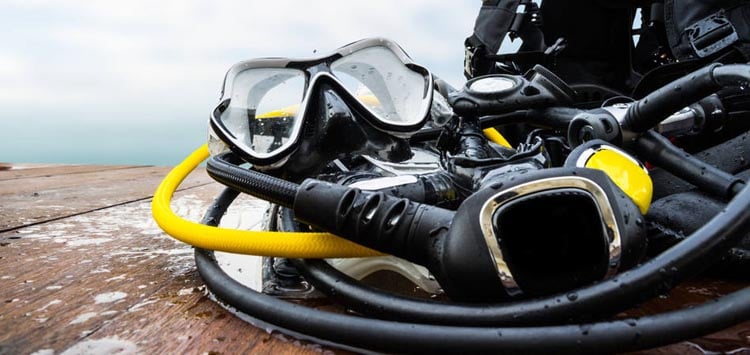Scuba Equipment and Health Care Amid the Corona Virus Outbreak
Background
The year 2020 started with a bad scare of a new corona virus that seems to be sweeping the
world by storm. With a 2% kill rate and a very rapid spread rate, one cannot blame the
population of people who would want to cancel their travel plans (diving included). After all,
it can be just another flu or it can be another disease like ebola. In the meantime we can all
speculate and choose to be coddled in our housing units to play it safe until it all clears out,
or enjoy the world as now is the best time to travel with cheaper deals brought about by the
dip in tourism. We get it. There are two types of people: the risk averse (who would want to
be in exile during the whole ordeal) and the adventure seekers (who would want to take all
the action in as it happens). The question is, which type are you?
This article goes out to both the risk averse and the adventure seekers anyway. The risk of
acquiring the Wuhan virus through diving is currently not tagged as high. However, it won’t
hurt you when you practice the following recommendations. In fact, it might benefit your
gear and could actually make them last longer. This is your quick guide on how to be a
responsible diver amid the health scare. This has been cross-referenced with
recommendations from Center for Disease Control (CDC), Divers Alert Network (DAN), and
other scuba diving communities.
Recommended cleaning solution: Mix 1 tablespoon of bleach with 1 gallon of water.
ON REGULATORS, SNORKELS AND MOUTHPIECES
Before use
You may dab an alcohol swab or antibacterial mouthwash to sanitize the mouthpiece. Rinse
with fresh water taking care to not press the purge button.
After use
It is a general recommendation to rinse your regulators and mouthpieces in bleach solution
for up to 2 minutes before rinsing it in fresh water. Your bleach solution is a mixture of 1
gallon of fresh water with one tablespoon of bleach. As you may already know, rotate
moving parts to remove salt residue and allow it to completely dry before storing. Rinse
with fresh water taking care to not press the purge button.
ON MASKS AND FINS
Before use
You may dab a clean cotton ball with mouthwash and clean the skirt of your mask prior to use.
After use
Let your mask and snorkel soak in bleach solution for about 2 minutes and rinse in fresh water.
Make sure to rotate any moving parts to remove salt, sand or other debris. After every use, allow
them to dry completely before storing to avoid mildew growth.
ON WETSUITS, BOOTIES, GLOVES
Before use
If your wetsuit has been properly dried and stored, you may just jump right in. If you wish to
sanitize it before wearing, let it sit on bleach water for 2 minutes and thoroughly rinse it in fresh
water.
After use
Allow your wetsuit to sit in bleach water for 2 minutes and rinse it in fresh water. Make sure to
remove all salt residue as this degrades the material of your wetsuit. Undo all zippers during the
soak and do a gently massage on the materials as you would do a simple handwashing of
clothes. Rinse thoroughly and hang to dry in hangers with zippers open. Dry and store away from
direct sunlight.
ON MASKS AND FINS
Before use
You may dab a clean cotton ball with mouthwash and clean the skirt of your mask prior to use.
After use
Let your mask and snorkel soak in bleach solution for about 2 minutes and rinse in fresh water.
Make sure to rotate any moving parts to remove salt, sand or other debris. After every use, allow
them to dry completely before storing to avoid mildew growth.
ON BOUYANCY COMPENSATING DEVICES
Before use
You may dab cotton with mouthwash and wipe it along the mouth receptacle of your
inflator hose.
After use
Soak the BCD in bleach solution. Rinse the exterior of the BCD thoroughly with clean, fresh
water. Remove the weight pockets (if applicable) and rinse separately.
It is also a good idea to rinse the inside of your BCD: Start by dumping any water that
entered the bladder during the dive, then pour clean, fresh water into the bladder via the
low-pressure inflator hose. Orally inflate the BCD and shake the water around the fully
inflated bladder. Finally, invert the BCD so that the inflator hose is the lowest point, and
dump out the excess water through the dump valve of the BCD on the side where your
inflator hose is. Avoid making the water exit through the hose as this may pose a risk on
having debris stuck on the buttons of the inflator. Clean the oral inflation piece as you
would clean a regulator or mouthpiece.
After a thorough rinse, inflate the BCD about halfway. Allow it to dry completely before
deflating it, then store it away from direct sunlight.
As with anything, follow the manufacturers recommendation on the proper maintenance of
your equipment.
We hope you consider these recommendations and stay away from health scares this
season. Save diving!


Recent Comments